+ Learn to craft more compelling beats and warped, broken rhythms with Son Lux’s Ian Chang. His innovative course is out now on Soundfly.
Drummers today are expected to come prepared and ready to play every session and every night on the road. After you’ve done the work to learn the music you need for a performance, the next step is to make sure you have the right tools to get the job done.
In most performance situations, you may not have the luxury of playing with your own gear, so here are five essentials you can bring along in your stick bag that will help you come prepared for any gig.
1. Your Sticks
Sticks come in all shapes and sizes. It can be difficult to figure out which ones will be appropriate for each playing situation. Four main factors tend to differentiate sticks from each other: tip type, weight, taper, and wood type.
The type of tip that a stick contains is too often overlooked despite its potential to differentiate the timbre and playability of a stick as much as anything else. Each type of tip has a distinct sound on drums and cymbals.
- Barrel: quick rebound and loud
- Acorn: broad cymbal sound and fat tones on drums
- Teardrop: good articulation, warm and focused tones
- Nylon: extremely durable tip and bright tones on cymbals
- Round/Ball: dark and crisp on drums and cymbals
- Oval: broad sound on cymbals and drums
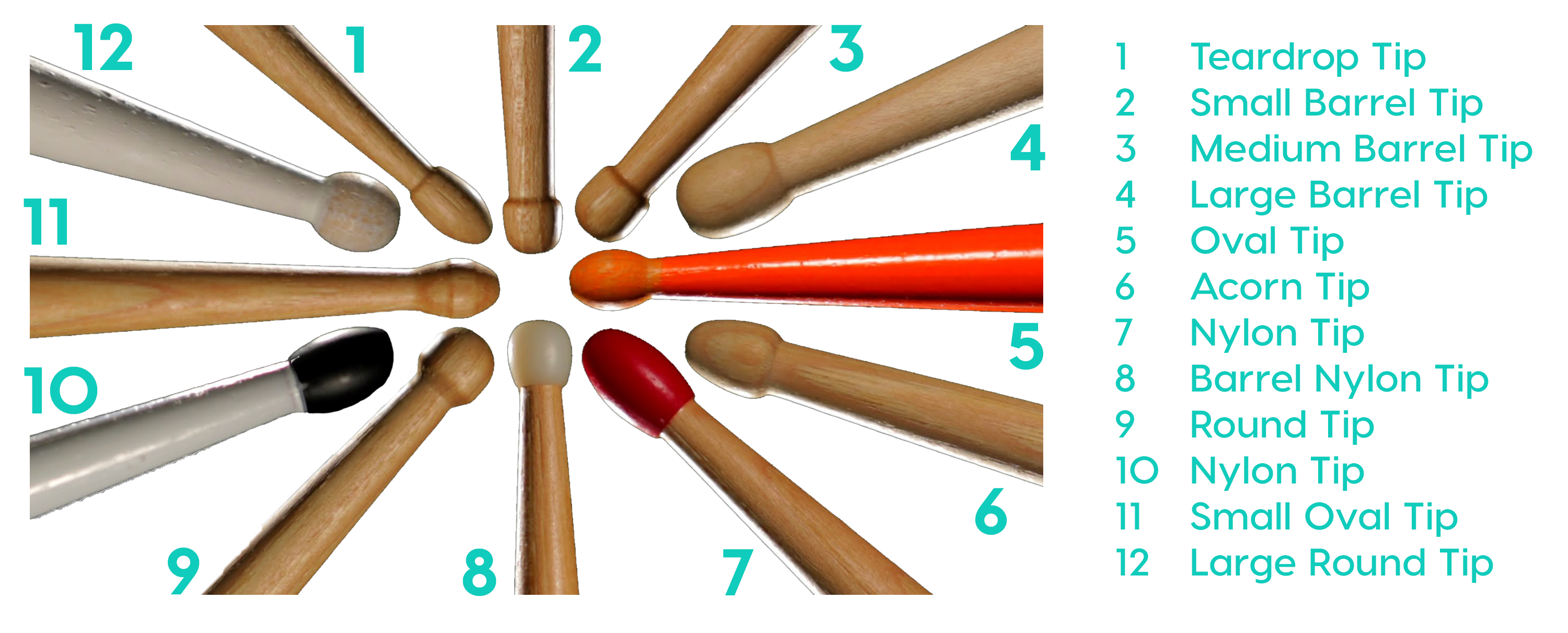
+ Read more on Flypaper: “Amazing Drummers Who Were Still Green at Eighteen”
The weight of a stick also plays a role in its feel when playing different genres. A good rule of thumb is the louder the playing environment, the larger in diameter and the more durable a stick should be and vice versa for light playing settings. This is not genre specific by any means. Moreover, in the case of most drummers, a good starting point is finding a stick that feels comfortable in your hand. Then, adjust the dynamics in your playing to suit the music.
Diameter range for popular drumsticks:
- 2B: .630” to .635”
- 5B: .595”
- 5A: .550” to .580”
- 7A: .535” to .540”
Note: The diameters vary from company to company.
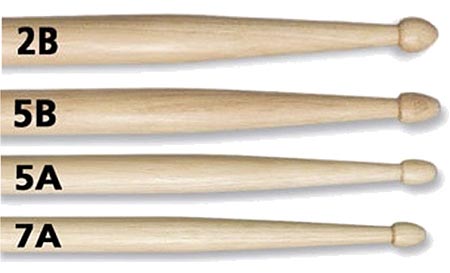
The taper is the area just below the tip of the stick that starts very narrow and slowly widens to the middle. This part of the stick determines how much throw a stick has; in other words, it determines where the stick is balanced between the tip and butt end.

Promark created a line of sticks called Select Balance that feature and accentuate various taper positions, giving drummers the option to choose between a more responsive and agile stick (rebound balance) or one that has more power and feeling of front-heavy weight to it (forward balance), without actually adding weight to a stick of the same diameter.
And lastly, the wood type that you choose will also have an effect on how a drumstick feels. Oak is the hardest and most dense wood, hickory is medium hard, and maple is very soft. In my personal experience, I’ve found that sticks made out of oak are about 15 to 20% heavier than hickory sticks of the same size, so if you’ve found a stick diameter that works for you but requires more weight, try a harder wood type.
- Maple: fast and light, but tends to wear down quickly
- Oak: heavy feel as a result of being a dense wood and extremely durable
- Hickory: a good combination of durability and fast, natural feel; the most versatile stick of the three
2. Brushes and Rods
Brushes and rods produce timbres from the drums that can be more legato, mellow, or that even resemble auxiliary percussion. A common misconception about brushes and rods is that they can only be used for low-volume situations. Depending on the weight and material used to make them, however, they can be used for quite a full range of dynamic levels.
The weights of brush bristles range from light to heavy, and in the case of rods, they vary based on bundle size. Here are some of the brushes and rods on the market.

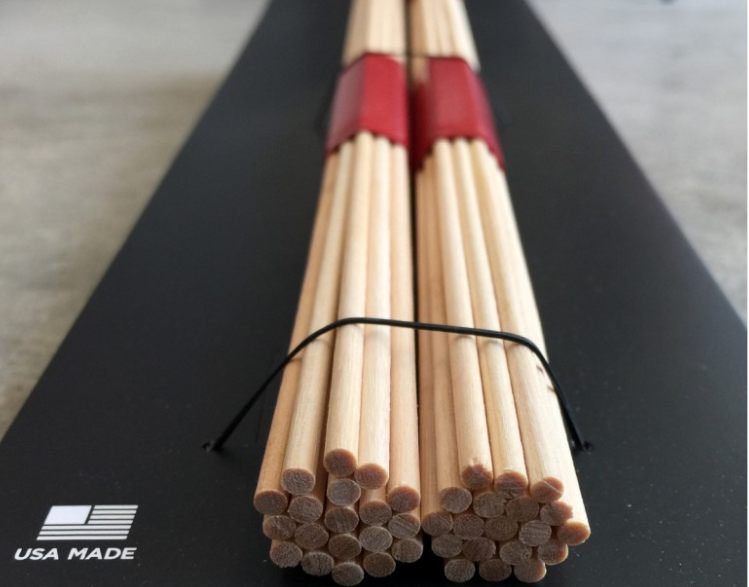
+ Learn production, composition, songwriting, theory, arranging, mixing, and more; whenever you want and wherever you are. Subscribe for full access!
3. Mallets
Mallets are useful for cymbal rolls and tom grooves that require a more mellow attack and even to play on electronic pads so the click of the rubber doesn’t bleed into overhead microphones. Similar to sticks and brushes, there are a variety of options when choosing mallets based on the material of the mallet head and their hardness.
Some common types are made of yarn, felt, and cotton.
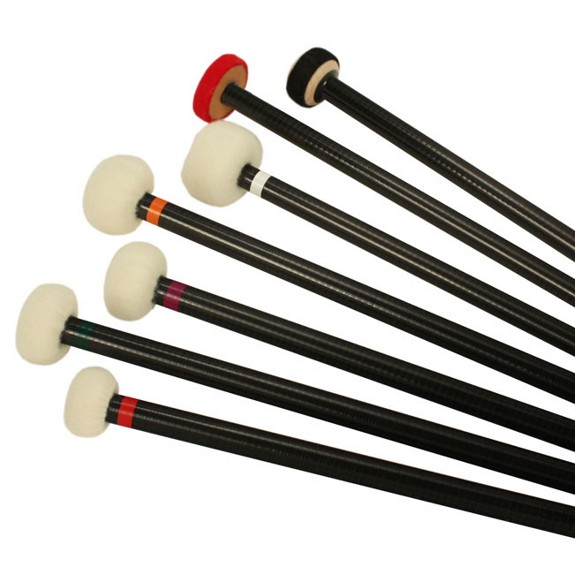
+ Read more on Flypaper: “How Successful Musicians Practice: Drums and Percussion”
4. Kick Beaters
Utilizing different kick beaters can create drastically different timbres and tones ranging from clicky and articulate to round and warm and everything in between. Depending on what style of music you’re playing, you can really add some interesting textures to the rhythm section‘s overall sound simply by choosing the right kick beater.
They’re made from materials such as felt, wool, wood, and plastic.
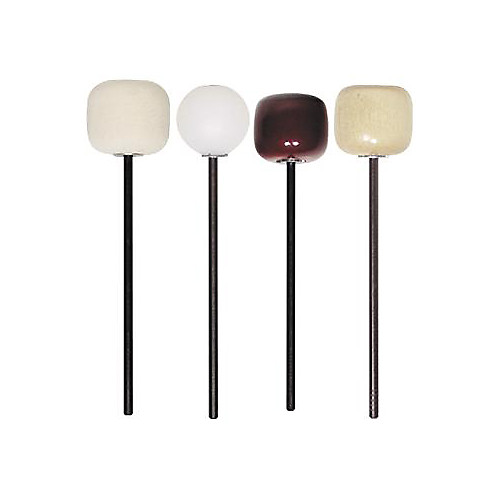 5. Accessories
5. Accessories
Finally, here’s a short list of additional accessories you can to bring to a gig to expand your sound palette and make the kit feel comfortable for you:
- Shakers
- Cymbal felts and washers
- Tambourines
- Cymbal chains
- Moon gels or gaff tape
- Drum key
- Drum tools (see below)
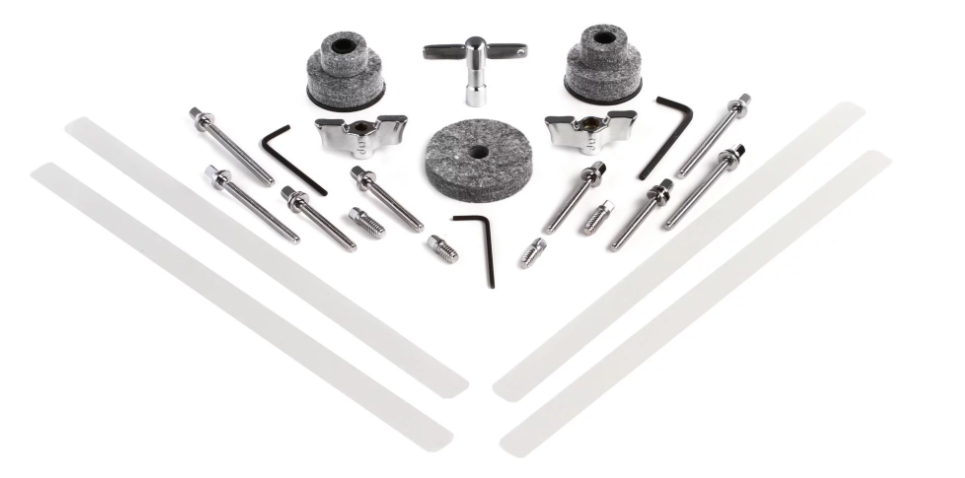
Keep on Grooving…
Continue your learning with hundreds of lessons on songwriting, mixing, recording and production, composing, beat making, and more on Soundfly, with artist-led courses by Kimbra, Com Truise, Jlin, Kiefer, RJD2, and our new The Pocket Queen: Moving at Your Own Tempo.




